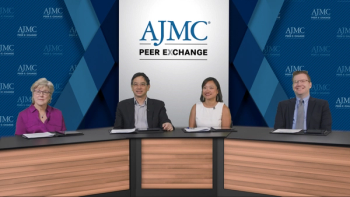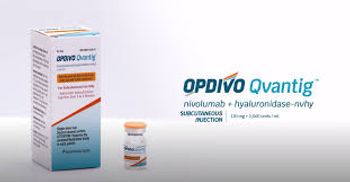
Clinical
Latest News

Latest Videos

CME Content
More News

Panelists discuss how sotatercept represents a paradigm shift as the first activin signaling inhibitor showing dramatic improvements in heavily pretreated patients, with the Stellar and Zenith trials demonstrating significant reductions in clinical worsening and potential for reverse remodeling.

Panelists discuss how riociguat targets the nitric oxide pathway and is approved for both Group 1 PAH and Group 4 chronic thromboembolic pulmonary hypertension, with specific patient selection criteria based on risk stratification and surgical candidacy.

Panelists discuss how combination therapies targeting different aspects of spinal muscular atrophy (SMA), such as myostatin inhibitors (targeting muscle) alongside SMN protein-enhancing treatments, hold promise for addressing fatigue and improving muscle function in older patients.

High body mass index affects outcomes in acute lymphoblastic leukemia (ALL), highlighting the need for targeted interventions to improve patient survival rates and treatment efficacy.

Remote care reduced readmissions and improved functional outcomes in COPD in a recent study.

A new consensus from the National Psoriasis Foundation outlines a clear benchmark for remission to improve treatment decisions and patient outcomes.

The FDA approval marks the first approval of a type of pre-exposure prophylaxis that would only require 2 treatments per year.


This study reveals that dupilumab is associated with a modestly increased risk of developing psoriasis, highlighting the importance of monitoring skin reactions during therapy.

Target trial emulation study finds no added effectiveness or persistence with combination therapy for plaque psoriasis.

Panelists discuss how data from MDA 2025 demonstrate that delandistrogene moxeparvovec (gene therapy for DMD) shows statistically significant improvements in motor function outcomes including North Star Ambulatory Assessment, time to rise from floor, and 10-m walk/run compared with external control groups over 2 years of treatment.

Panelists discuss how recent advancements in muscular dystrophy treatment have evolved toward truly disease-modifying therapies using gene replacement, antisense oligonucleotides, and gene transfer technologies, while highlighting the ongoing challenges of identifying at-risk populations and collecting comprehensive safety and efficacy data.

At the 30th European Hematology Association (EHA) Congress, hematology experts highlight breakthroughs in treatment, the importance of patient voices, and challenges in making innovations accessible worldwide.

The late-breaking abstracts presented on the last day of the 2025 European Hematology Association (EHA) Congress show “what a vibrant clinical specialty we’re in,” according to session cochair Brian Huntly, PhD.

At the European Hematology Association (EHA) 2025 Congress, Ashley Yocum, PhD, highlights how the Beat AML Master Trial advances safe, personalized treatment and expands targeted therapy options for patients with acute myeloid leukemia (AML).

A post-hoc analysis of EPCORE-NHL-1 was presented at ASCO.

Adding polatuzumab vedotin to rituximab, gemcitabine, and oxaliplatin (R-GemOx) significantly improved overall survival in transplant-ineligible patients with relapsed/refractory diffuse large B-cell lymphoma (R/R DLBCL), according to Matthew Matasar, MD, of Rutgers Cancer institute.

The phase 3 IRAKLIA trial assesses subcutaneous isatuximab via on-body injector vs intravenous (IV) administration, in combination with pomalidomide and dexamethasone, in relapsed/refractory multiple myeloma (RRMM).

Abstracts presented during the plenary session of the 2025 European Hematology Association (EHA) Congress spanned from novel drug regimens for myeloma and lymphoma to investigation of leukemias on the molecular and genetic levels.

Our knowledge of the effects of space and low gravity on blood cells, clotting, and anemia continues to expand, but further research is needed as commercial spaceflights are poised to grow in popularity.

A new analysis of obesity guidelines suggests more evidence is needed to develop stronger guidelines for the transition period between childhood and adulthood.

Real-world data show no significant differences in overall survival between patients with or without cytogenetic risk factors.

Early results from the phase 1 SANRECO trial suggest that divesiran is safe and well tolerated, and may reduce the need for phlebotomy in patients with polycythemia vera by increasing hepcidin levels and improving iron regulation, according to lead investigator Marina Kremyanskaya, MD, PhD.

A combination of acalabrutinib and venetoclax showed better results with the addition of obinutuzumab, whereas mixed findings in a cross-trial comparison were complicated by the inclusion of deaths related to COVID-19.

Skepticism still persists around the use of measurable residual disease (MRD) for clinical and regulatory decision-making in the European context, but panelists explained the next steps that are required to advance the use of MRD.



















































